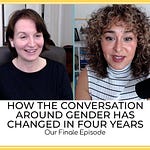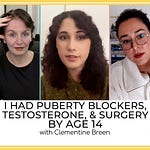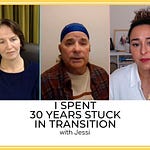Heather Brunskell-Evans is a philosopher and sociologist who studies the intersection of medicine and culture. She joins us today to trace the ways in which queer theory evolved in academia and moved into the broader culture, including the Gender Identity Development Service (GIDS) in the UK. Explaining how a social justice angle is key to the ‘affirmative model’ of care for gender dysphoria, Heather recounts a few key moments when she realized there were authoritarian elements at play in silencing thought and conversation around the topic of transgender, even for parents trying to protect their children.
Links:
Heather’s Website
http://www.heather-brunskell-evans.co.uk/
Transgender Children and Young People: Born in Your Own Body
https://www.cambridgescholars.com/product/978-1-5275-0398-4
Inventing Transgender Children and Young People
https://www.cambridgescholars.com/product/978-1-5275-3638-8
Transgender Body Politics
http://www.heather-brunskell-evans.co.uk/thoughts/transgender-body-politics/
Heather on Twitter
https://twitter.com/brunskellevans
The History of Sexuality
https://www.amazon.com/History-Sexuality-Vol-Introduction/dp/0679724699
Janice Raymond, The Transsexual Empire
https://janiceraymond.com/the-transsexual-empire/
Vanity Fair Cover
https://www.vanityfair.com/hollywood/2015/06/caitlyn-jenner-bruce-cover-annie-leibovitz
Moral Maze
http://www.heather-brunskell-evans.co.uk/tag/moral-maze/
Heather Brunskell Evans opinion piece for Leicester University
Extended Notes
Heather has been working in this field since the very beginning --Since the early 1990s.
Heather shares a bit about her background and how she got started.
The moment Heather discovered medical intervention for transgender children in 2016, her work has not been the same since.
Why did Heather decide to do her PhD in child sexual abuse?
Technically, we don’t actually have any human or social rights.
What research did Heather discover when she was doing her PhD in queer theory?
Heather describes what post-structuralism is.
We are a byproduct of the culture we live in, but these concepts have not been introduced into queer theory yet.
When we are feeling insecure about life, we tend to naturally go back to our ‘roots’.
Heather had to censor herself in the 90s. You could not openly talk about women’s bodies.
The serperation between sex, biology, and gender was intially very good and had some valid points associated with it.
Throughout the 70s there was a shift in our views on gender and biology, but by the 90s, there was an overcorrection happening. We are seeing the same thing happening today.
People are claiming that some women at the end of the bell curve are stronger than men, which means you can not say women on average are less strong than men. Heather shares her thoughts on this.
Is femininity a performance act? Heather wrote about it, but many disagree with her findings. The university lawyers had to get involved.
This is around the time Heather also discovered that she was no longer able to call Bruce Jenner a man. She was ‘deadnaming’.
Heather wanted to fight it and stand up for herself, but her close friends and colleagues said to surrender now before it gets worse.
The Gender Identity Development Services (GIDS) turned their mission from a clinical model to a social justice model.
It was a perfect storm. The GIDS were now in the business of political activism. This meant that only trans people had the right to speak about trans issues, and the professionals needed to ‘keep quiet’.
This podcast is partially sponsored by ReIME, Rethink Identity Medicine Ethics:
Learn more about our show: Linktr.ee/WiderLensPod













Share this post